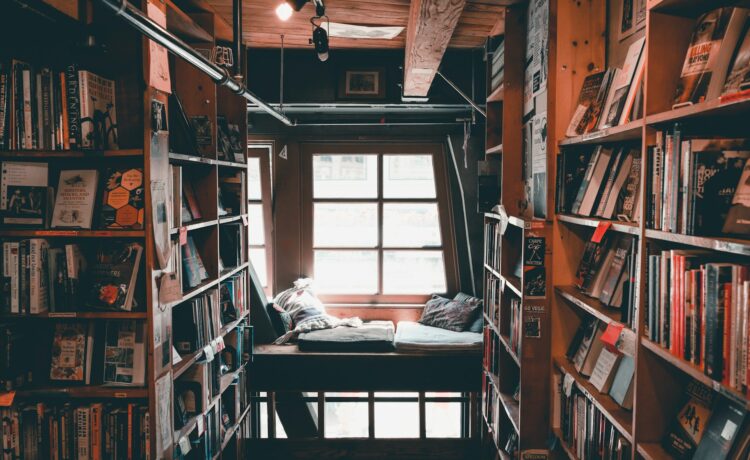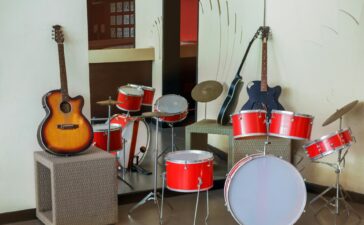Step into any library, and you’ll be greeted by a magnificent sight: _shelves upon shelves with novels, fiction, stories, histories, geographies, almanacs, cashbooks, story-books, play-books, copies of copies, hieroglyphics, black-letter, red-letter, green-letter, leaden-letter, cunning purchased letter, mingle-mangle, muddle-puddle, and histories of the earth in creation. However, these shelves are more than mere, functional frameworks. They are an important part of our reading lives—besides being functional objects, they are also the first step to a different reality.
As soon as one opens the door, the sorted disarray of spines standing in ranks invites one to get near. How books are arranged encourages interest, discovery and at the same time, the environment is relaxing and stimulating. Joy is sexy doesn’t it? It’s tough to dispute this simple fact: good bookcases turn straightforward bookshelves into mini treasure chests of knowledge and creativity.
Well, how does these shelves become so important? Relatives of these symbols include their history, benefits for readers, the impact on our habits, and some exciting designs that inspire people to read even more.
The Importance of Bookshelves in Libraries
Book shelves are the most vital furniture in the case of any library. These are the foundations for so many millions of books, and each of them is a portal to a story or thought process.
These are designs that shape how we can move through these spaces. An appealing book shelf can take the reader from one shelf to another in a harmonized manner creating curiosity out of necessity. It becomes easier for the readers to visually search for titles by which the make association with a specific genres or authors.
Also, the bookshelf is a symbol of culture, as are all items used for the storage of books. Not only do they represent this literary diversity, but they also seem to reflect interests and values of the respective communities. The grouping of different genres gets to show what is topical in society at a given time.
All these structures create a welcoming environment or learning that leaves children with no reason to avoid exploring structures. People just disappear in libraries while surrounded by order, systematic rows of inspiration; that’s an art of librarian’s work that reaches far beyond meeting customers need for texts.
History of Library Bookshelves
Placed desks also have a long history and people have been using them for at least 200 years. To start with, books were stacked in chests or on a plain table. As literacy grew, so did the practical need for some form of organization of such material became apparent.
Even in the Middle Ages, monks stored some texts in their monasteries. For this reason they created strong and firm wooden shelves on which to place their valued manuscripts. It means that these early designs never ceased to pave way for future developments.
The Renaissance was able to bring change with fancy libraries appearing throughout Europe. library bookshelves began to turn into architectural marvels complemented by unique carving and designing elements. This was no longer store room management; it was more of a parade of information.
It is the case when in the context of the growing popularity of public libraries in the 19th century, functionality was the main focus. Antique libraries allowed for book organization according to subject, while metal and adjustable shelving are fixtures’ success story of the present time.
Contemporary design develops along this line while integrating technology and aesthetics to produce environments that are appealing and inspiring for users.
Advantages of Organized Bookshelves for Readers
Shelves of books organized, change the ability to read. They actually help in making the next great book that you are likely to read more accessible. If everything has their own place and order, then managing with it becomes a one step process.
The proper organization of a shelf can elicit interest. Sometimes you might come across a title of something you had not thought of for a long time or see something new that will interest you. This kind of wandering often results in quite literary adventures indeed.
Also, an organized bookshelf makes the environment free of clutter and clears the mind of unnecessary information. Since there are limited distractions in a reader’s surrounding, reader will be in a better position to concentrate on the material of their interest. The environment is further enhanced to be more suitable for the provision of optimal thinking.
Another advantage is the attainment of accessibility. Things such as genre a, author, or even the colour of the spines can be used to find certain books easily. This way, readers feel as if they have the power to find where to look for exactly what they want.
A clear division helps in developing a feeling of the ownership of the library, especially the books, among the users — each well stacked book on the shelves has a story to share.
Impact on Reading Habits and Comprehension
Shelves are not just unit for book warehousing; they also define how books are to be treated. Another element of bibliotherapy is that a well-stocked shelf encourages browsing, and thus the reader stumbles across something they find stimulating, as it were, in their own home.
When people are able to move through their environment and spaces, then they are likely to stumble onto a book and read. Such a tendency only opens the absolutely spontaneous and surprisingly interesting literary routes and broads the reading spectrum.
Furthermore, it can be also stated that the design of shelves has its impact on the comprehension’s extent. Organization of texts can contribute to enhancing atmosphere and make a reader interested in material, it will be viewed.
Moreover, organized spaces may minimize distractions as most people can intensively concentrate on what they are reading. The formation of neat and timely rows makes it easier to search for certain material and definately helps to memorize.
That is, the manners books exist and are placed influences the habits and perception—turning reading into a value.
Creative and Functional Bookshelf Designs
Library book shelves are not mere display furniture; they are embodiments of creativity and indispensability. Most of these contemporary libraries have quality designs which make their appearance to be more attractive while fulfilling other functions.
For example, some are made of environmentally friendly material even as they sell books that are environmentally friendly as well. Some design event spaces with interior partitioning so that they can reorganize space depending on the need in other business events like conferences, meetings and so on.
A poster with an interesting picture attracts people, for everything that is created is unique in its form and design. This Do It Yourself spiral bookshelf can be a show stopper, it looks beautiful, and encourages people to check out the books. Another subtype is an interactive shelving that captures the users’ attention because such users can manipulate or even create what is being presented.
I also think the combination of art and function of the library bookshelves provides the right setting for reading. I did see it turn a basic experience into an event where residents browse through new additions to their collection in an inspiring environment.
All these ideas are meant to enhance the relationship people have with printed media and books in particular. As mentioned earlier when people are surrounded by aesthetically beautiful environments they tend to want to read those stories to be found on the vibrant covers on novels uniformly placed on the shelves. Architecture does not end with lines and shapes but each curve and every corner is designed to be explored – a relevance that of books are troves waiting to be opened.




